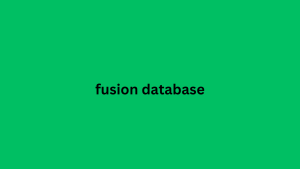We’ve certainly exaggerated to make the headline catch your attention. Your emails may not be terrible, but we’ve found so many examples of poorly written and designed trigger emails that we’ve decided to collect them in one article and show you how to make them better.
Trigger emails are the outcasts of the email world. While promos are usually carefully thought out and then edited a million times, triggers are often written in five minutes on the fly and sent over and over again as boring, unformatted text. This is especially true for transactional emails — those triggers that accompany a purchase from the time an order is placed to its receipt.
This is because triggers always seem like a no-brainer. But we think otherwise. If you think about these emails well, they will add value to the customer’s loyalty bank.
Why are triggers so important?
Triggers are emails that are sent to a subscriber in response to their actions on the site. This could be a subscription confirmation, order placement, abandoned cart or browsing, gratitude for a purchase, a request to leave a review, and so on.
Trigger mailings: features, usage, settings
The superpower of triggers is that they are targeted and have a higher open rate than all other categories of emails. They are opened by those who interact with the brand. So triggers are a chance to warm up the loyalty of regular customers and earn the sympathy of new ones.
What should be in triggers
Letters should be as short and concise as possible. A person opens a letter to find out specific information. The less time he spends to understand the essence of the trigger, the better.
Trigger mailings are personalized, so it is appropriate to address the person by name. In promotional and content letters, this is often annoying. It is obvious that hundreds of people received one letter, which means that “Hello!” or “Hello, friends!” is just a forced formality.
Content Mailings: How They Work and Do They Really Help Business
The trigger is sent to a specific person, it is natural to say hello in such a situation. At the same time, it is important to pull adequate data from the database to avoid incidents.
For example, when a trigger shouts in caps “IVANOV IVAN IVANYCH, thank you for your purchase!” – this is perceived not as gratitude, but as total surveillance. We know everything about you: your full name, address, and date of birth, just try not to buy from us again – we will find you and punish you!
What to do about it?
Set up proper transfer of fields from the form to the database: automatically format uppercase and lowercase, separate first name, middle name and last name, add only first name in letters.
News
News is the reason why you sent the letter: you registered, your personal account was created, the order was accepted or cancelled, everything was paid – here is the receipt, we sent the parcel, the goods are in place, pick it up! And so on.
Each of these actions is a news item for a separate letter. There is no need to collect them together and dump them on the reader en masse.
Button/Link to details
In a letter about a successful reservation of goods, you need to say that the goods are reserved – nothing more. If you want to describe in detail the payment methods, how and where to pick up the goods and which method is more convenient, create separate sections on the site for this. In a transactional letter, you can (and even should) provide links to such sections, but do not duplicate all the information.
Contacts
It is impossible to take into account all potential questions, so it is logical to end the letter with the contact details of the manager you can contact.
Turnkey Email Marketing
Let’s look at the eight main pain points of triggered emails and try to cure them
Diagnosis #1: Lump everything together
Too much information in the letter
What’s wrong with this letter?
All information about the order, payment methods, site navigation is collected in a heap. To find the necessary data, you need to spend a lot of time and effort.
Unnecessary explanations. If a person buys online, he probably knows that to go to a section, you need to hover the mouse cursor over the arrow next to the user name.
It is better to describe the features of different payment methods in a special section on the website, and leave the icons in the letter and simply list these methods.
The letter, already overloaded with information, is made even heavier by constructions that do not carry additional information. For example, “Contacts are below”, “in case”, “similar to it”. Without them, the text will lose nothing.
There is no point in listing contacts by indicating a website address unless it is a link to a feedback form.
Order information should be moved to the beginning of the letter. For the buyer, fusion database it takes priority over payment methods.
What’s wrong with this letter?
The banner is misleading. The phrase “Become our consultant” sounds like an invitation to work, and “give us your opinion” is completely incomprehensible. Opinion about what?About delivery? how to find someone’s location by cell phone number It would be better to mention this at the very beginning, so that the subscriber immediately understands what is expected of him.
Thanking the reader for something they haven’t done yet is a bad idea because it looks manipulative. Especially twice. With this phrase, betting email list you leave them no choice and decide that they will definitely take the survey.
The brand’s specificity is not played up anywhere. A tea shop or a children’s toy store could have written such a letter.
The text in the letter does not correspond to the survey. The subscriber is asked about his age, income, number of children, most frequent purchases, etc., but not once about product range preferences. From this we can conclude that the purpose of the letter is to segment the audience and send personalized product recommendations in the future, and not to adjust the store’s product range. This should be said honestly.
The link contains a large survey, which will take the subscriber at least 10-15 minutes to complete. It is better to warn about this in advance, explaining why you need so much data.
What’s wrong with this letter?
A monotonously designed canvas of text is difficult to perceive. If the letter has more than three sentences, structure the information into different semantic blocks.
The letter does not contain a button that would lead the user to the personal account on the registrar’s website. To renew the domain, you need to remember the address of the registrar’s website (and it has changed over the last year, so it is not easy), go to the login page, go to the personal account and also remember how to pay for the domain in this interface.
How to fix everything
If there are more than three sentences in a letter, combine them into semantic blocks, divide them into paragraphs, highlight them with headings and lists. Try to follow the rule: one thought – one paragraph.
The structure of a letter that is easy to read
Another example of poorly structured writing.
A letter overloaded with information
What’s wrong with this letter?
Due to the chaotic structure, the subscriber’s gaze does not catch on important elements: order data, contact links, parcel tracking and payment methods. To prevent this data from getting lost in the general mass, it needs to be combined into common semantic blocks.
The letter is overloaded with information. The ad block on the right can be removed. The person has just received an order, there is no need to immediately tell about his order, Triggered Emails tracking and payment methods – he already knows about it.
It is better to mention information about CDEK.MARKET at the very end of the letter, when the subscriber has already received all the information about his order and will not be distracted.
How to fix everything
An example of a letter with only the necessary information
Diagnosis #5: Not taking into account the brand’s style
A letter where the brand loses its style
What’s wrong with this letter?
This is how a letter from absolutely any company can look: a bookstore, a travel agency. A clothing store, a school or a course. The subscriber probably knows who you are. But there are trillions of letters in the inbox. To attract attention and awaken memories of yourself. It doesn’t hurt to add a little specificity and the brand’s corporate style.
At the same time, HomeMe’s promotional and content mailings are by no means faceless; they have their own voice and style:
Brand letters with a recognizable style
We believe that it is important to consider the style in all letters. Otherwise, all the efforts on promotion and attempts to build friendly communication can be crossed out by one formal letter.


